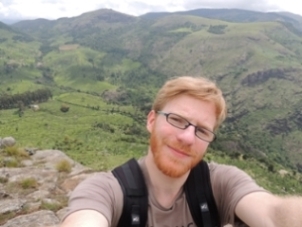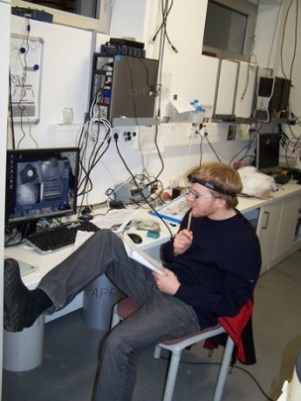

Dr Sylvain Alem
Email: s.alem@qmul.ac.uk Room 2.16
Research interests
My main field of research is the evolution of sexual communication and I have the theoretical and technical knowledge of a behavioural ecologist that studied the evolution of sexual behaviours in acoustic insects. But I am broadly interested in the evolution of animal behaviours, communication and how the interplay of natural and sexual selection may shape the origin, evolution and maintenance of animal behaviours. Because the achievement of a whole understanding of animal behaviours and their diversity requires the study of both proximate mechanisms and ultimate processes as well as their interactions, I recently extended my field of research to the evolution of behavioural mechanisms in fruit flies and bees.
Past work: PhD research
I did my PhD research in the field sexual selection and bioacoustics under the supervision of Michael Greenfield at the Research Institute on Insect Biology (IRBI, CNRS, Tours, France). Below is a short abstract of my PhD work: On the selective interplay in an acoustic moth: A study of the origin, the evolution and the maintenance of sexual behaviours. In order to achieve a better understanding of how natural selection shapes sexual traits it is essential to adopt a broader approach and to consider the interplay between the different selective processes at work. During my PhD I investigated the simultaneous influences of viability and sexual selections on the origin, the evolution and the maintenance of sexual traits in an acoustic moth: the lesser wax moth (Achroia grisella). Females of this pyralid moth chose their mate based on acoustic characters of the ultrasonic calling song broadcasted by males while competing at lek. However being very conspicuous male ultrasonic displays may also attract specific predators: insectivorous bats. Therefore sexual and viability selection pressures may act simultaneously on individuals at leks. During my PhD I investigated how interactions between these selective pressures can shape (1) the evolution of female mate choice, (2) the maintenance and evolution of lekking, (3) the origin and evolution of sexual acoustic communication. Taken as a whole my work emphasises the relevance of the study of selective interplays between viability and sexual selection in order to improve our understanding of how natural selection may shape the origin, the evolution and the maintenance of sexual traits.Educational background
2013: Postdoctoral researcher (Fyssen Foundation), Queen Mary University of London, UK. 2012: PhD. in Life Sciences, University François Rabelais of Tours, France. Supervisor: Prof. Michael D. Greenfield (michael.greenfield@univ-tours.fr).
2011-2012: Teaching assistant, University François Rabelais of Tours, France.
2008: MSc. Evolutionary and Population Biology, University François Rabelais of Tours, France.
2006: BSc. in Life Sciences, University François Rabelais of Tours, France.
Publications